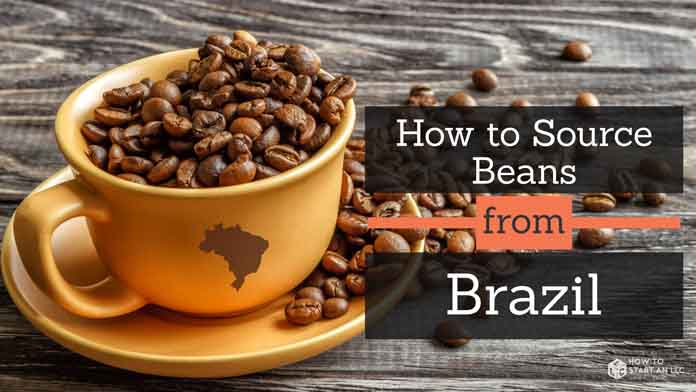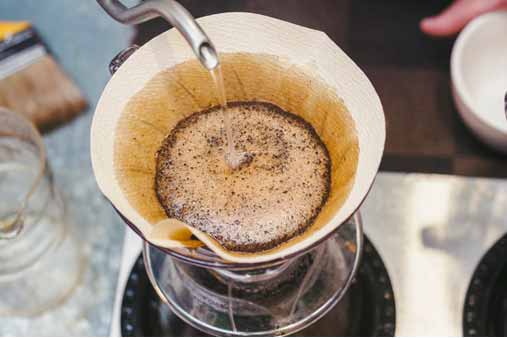How to Source Coffee from Brazil
Navigating the ins and outs of coffee sourcing can feel like an overwhelming and complicated process.
This guide summarizes what’s involved — and what to look for — when buying coffee beans from Brazil so you can make an informed decision for your roastery.
Recommended: Read our full, in-depth How to Start a Coffee Shop Business guides, inspired by coffee professionals, they will help make your coffee dreams real, from sourcing beans to hiring baristas, choosing the best POS system, forming an actual company, and everything in between.

Why Brazil?
With Arabica beans comprising 80 percent of its output, Brazil’s coffee production has a reputation for reliable quality and consistency — important factors for coffee roasters. The Brazil Specialty Coffee Association (BSCA) advocates on behalf of the nation’s farmers. BSCA also aids in the promotion of sustainable practices, providing tools and training for coffee farmers.
Traditionally, Brazilian farmers process their coffee using the natural method given the scarcity of water across the country. More recently, however, a growing number now use the washed and pulped-natural processing methods in an effort to bring out a variety of flavor profiles.
Brazil's Growing Regions
There are four major coffee-producing states in Brazil that encompass a variety of regions — all growing specialty coffees. Here’s a guide to the key characteristics found in just the regions of those states that produce Arabica beans:
State: Minas Gerais
This state produces about 50 percent of Brazil’s Arabica coffee. It’s also a major producer of specialty coffees from this country.
Matas de Minas
- Flavor Profile: The rise of this region’s reputation for growing high-quality, specialty coffee is due to the caramel and chocolate notes produced by the area’s high humidity and warmer climate.
- Processing Format: Washed or natural
- Average Harvest Season: October to March
Chapada de Minas
- Flavor Profile: Due to its highland location, this region commonly uses mechanized production practices. This results in beans with a sweet and, sometimes, chocolate flavor.
- Processing Format: Washed or natural
- Average Harvest Season: October to March
Cerrado de Minas
- Flavor Profile: The first coffee-producing area to win the Brazil “Designation of Origin” seal, Cerrado de Minas boasts a similar stature in the coffee world to that of famous wine-producing regions. Its farms range in size from medium to large estates and, due to its four distinct seasons, provide a perfect environment for growing specialty coffee. Coffees from this region are typically more acidic than other regions.
- Processing Format: Washed or natural
- Average Harvest Season: October to March
Sul de Minas
- Flavor Profile: Responsible for about 30 percent of the country’s coffee production, this high-altitude and moderate-temperature region produces many varieties of Arabica beans — usually on small farms. Coffees in this region typically boast a fruity aroma and full body.
- Processing Format: Washed or natural
- Average Harvest Season: October to March
State: São Paulo
This state boasts a rich history as well as Brazil’s largest coffee-exporting port.
Mogiana
- Flavor Profile: Rich, red volcanic soil, high altitudes, and mild temperatures all help this region produce great coffees with low acidity, a full body, and notes of fruitiness or chocolate.
- Processing Format: Washed or natural
- Average Harvest Season: October to March
Centro-Oeste de São Paulo
- Flavor Profile: Characterized by its hilly terrain, this region is home to four cities with predominantly small- to medium-sized farms. Coffees from this area tend to have a mild flavor.
- Processing Format: Washed or natural
- Average Harvest Season: October to March
State: Espírito Santo
Known as Brazil’s largest producer of Robusta beans, this state also grows some specialty coffees.
Montanhas do Espírito Santo
- Flavor Profile: A highland area with mild temperatures, this region produces beans with a high acidity and fruit-forward flavor profile.
- Processing Format: Natural
- Average Harvest Season: October to March
State: Bahia
In contrast to Brazil’s long history of coffee production, Bahia only started growing coffee in the 1970s — making it the country’s newest coffee-producing state. Arabica beans account for about 75 percent of the coffee grown here.
Cerrado and Planalto da Bahia
- Flavor Profile: High-tech production practices set this region apart not only for their efficiency, but also for delivering high-quality, specialty coffees. In fact, one of the region’s coffees won the pulped-natural “Cup of Excellence” in 2015. Coffees from this area typically have a sweet flavor profile due to the high altitudes, rainy winters, and dry summers.
- Processing Format: Natural
- Average Harvest Season: October to March
Popular Coffee Farms in Brazil
Here’s a summary of several popular farms in Brazil. While we don’t work with these producers directly, these examples offer insight into the common practices of farms in this country.
Monte Alto
Based on its 136 years of operation, this farm earned a reputation for its fine coffees and long history of coffee production. Located in the state of Minas Gerais, it features a mountainous landscape and fertile soils. However, its steep slopes meant that, until recently, staff had to manually harvest all of its coffee.
This farm uses the pulped-natural processing method to produce beans with bright notes of almond and apple.
Sítio Brandt
Located in the mountains of Espirito Santo, this 40-year-old farm is another family-owned-and-operated business. While it produces both Robusta and Arabica beans, its staff keeps those coffees completely separate to ensure its Arabica beans remain 100 percent Catuaí.
After hand-picking its coffee cherries, farm staff process the coffee using the pulped-natural method.
Key Differences Among Origin Countries
The main differences between each coffee-producing country include the soil, elevation, and temperature associated with farms growing coffee plants.
Fertile soil is essential for producing high-quality coffee. On farms with higher soil fertility, coffee plants can produce larger yields and better defend themselves against disease — especially important when growing Arabica beans, which are susceptible to diseases like leaf rust. Yet, a soil’s fertility largely depends on the amount of volcanic ash, clay, and/or limestone it contains. Volcanic ash, for example, adds valuable minerals, such as feldspar, quartz, magnesium, cristobalite, and tridymite. Similar to the farming of wine grapes, a soil’s nutrient content plays a large role in a plant’s health and the flavor profile of its fruit.
“In order for a coffee plant to produce 100 pounds of green coffee (1 quintal), it must extract from the soil approximately 1.45 kilograms of nitrogen, 0.28 kilograms of phosphorous, and 1.74 kilograms of potassium.” – Luis Alvarez Welchez, manager and agronomist, ProSuelos Initiative
A farm’s altitude, in addition to its soil conditions, directly impacts the flavor profile of coffee grown there. This is because altitude affects the temperature in which coffee plants grow and temperature can boost or hinder a plant’s ability to absorb nutrients from the soil. Moreover, coffee plants growing at higher altitudes and lower temperatures also can photosynthesize longer. This allows the plant to metabolize nutrients in the soil and produce bigger, healthier cherries. The end result is a desirable hard coffee bean with a high sugar content. In contrast, plants that absorb fewer nutrients due to poor soil and/or hotter growing temperatures tend to produce softer beans with low sugar content.
There are, however, exceptions to this general rule. Hawaiian coffee grows at a relatively low elevation, but, due to the island chain’s location far north of the equator and ample shade to guard plants from the sun, it produces high-quality coffee at a lower altitude.
Final Considerations
If you plan to buy your coffee beans from an importer, the process is fairly straightforward. Contact your potential importer to set up a “cupping” event to sample their coffees and then work with them to place your order.
If you prefer to source beans directly from a coffee farm, there’s a bit more work ahead of you. First, you must travel to the farm(s) in order to “cup” their coffee before you make an order. While this “cupping” trip will enable you to start developing relationships with your farmer(s), you will need to hire a translator to accompany you unless you speak the local language.
If you decide to buy coffee beans from a specific farm after your “cupping” trip, you must then connect with an importer to help you with the shipping and handling of your coffee. Why? Because importers have expertise not only in managing customs and duties imposed on coffee shipments, but also on how to properly transport green coffee beans across borders based on the specific varietals and regions from which you order.
When selecting an importer, keep these considerations in mind:
- Storage is a major factor in ensuring the quality of your beans upon arrival. Do some research about the practices of your importer’s transportation services, including temperatures during transport, shipping time, and handling of your product.
- Minimums are another factor in ordering for your business. If an importer has a larger minimum than you are able to roast or store in a short amount of time, you could end up wasting money and product.
- The frequent availability of beans from specific origins also is important. Ensure you’re able to use a variety of coffees and origins provided by your importer as lots can differ wildly depending on season, climate, and politics.
- Some importers also can help you ensure you buy fair trade coffee for your business. For example, Crop to CupTM Coffee Importers, Pachamama Coffee, and Copan Trade LLC are just a few importers offering this service.
Pro Tip: Ask around in your community and online before choosing an importer to gain an understanding of their practices.

